I continue to learn more about bees. Last week, for example, I attended a webinar presented by two UC Riverside entomologists, Quinn McFrederick and Boris Baer, about native bees and honey bees and their current health status. You can watch it here; it has been given the title, “An update on current research on pollinator health.”
And I continue to take photos of bees visiting the flowers in my yard — as best I can, as many of the wild, native bees move so fast! (The photo above shows a honey bee approaching a Velvet Queen sunflower that already has a couple of Summer Longhorned Bees (Melissodes robustior) feeding on it.)
I thought I’d share a handful of my favorites photos of bees on flowers from the past few years. Maybe you’ve seen some of these bees in your yard? And maybe you grow some of these plants whose flowers are loved by these bees?
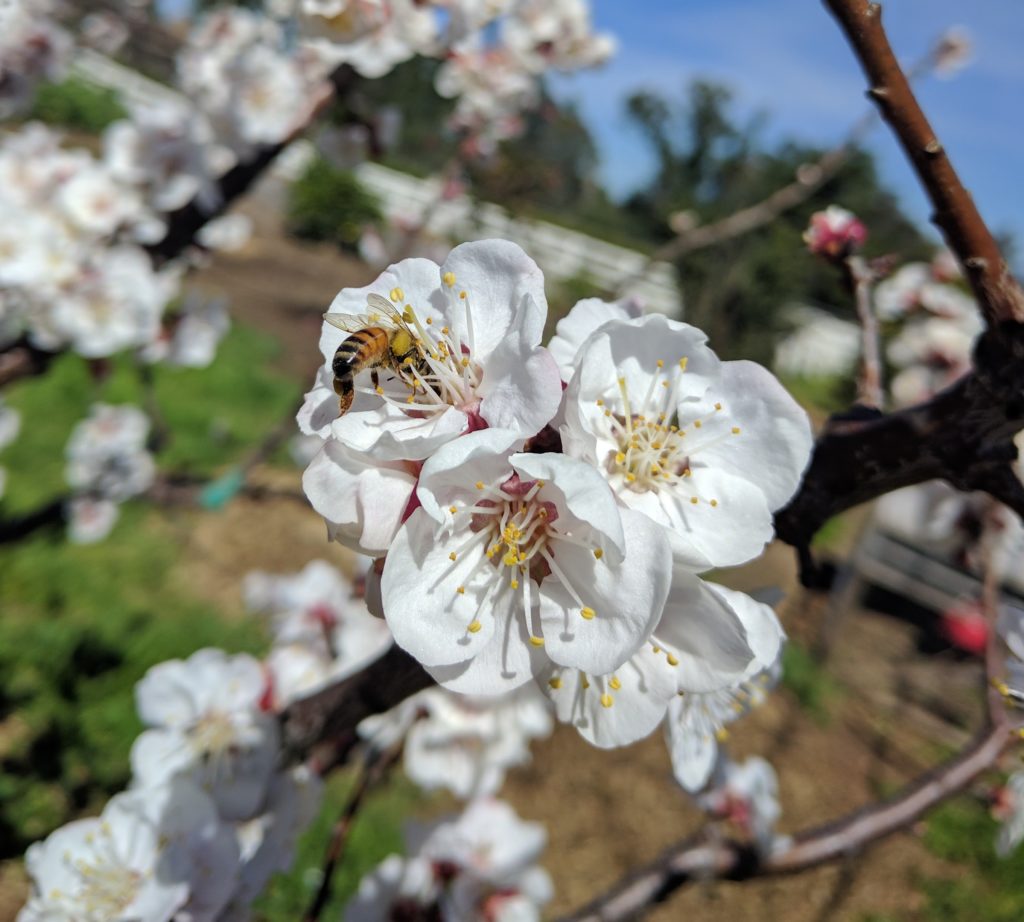
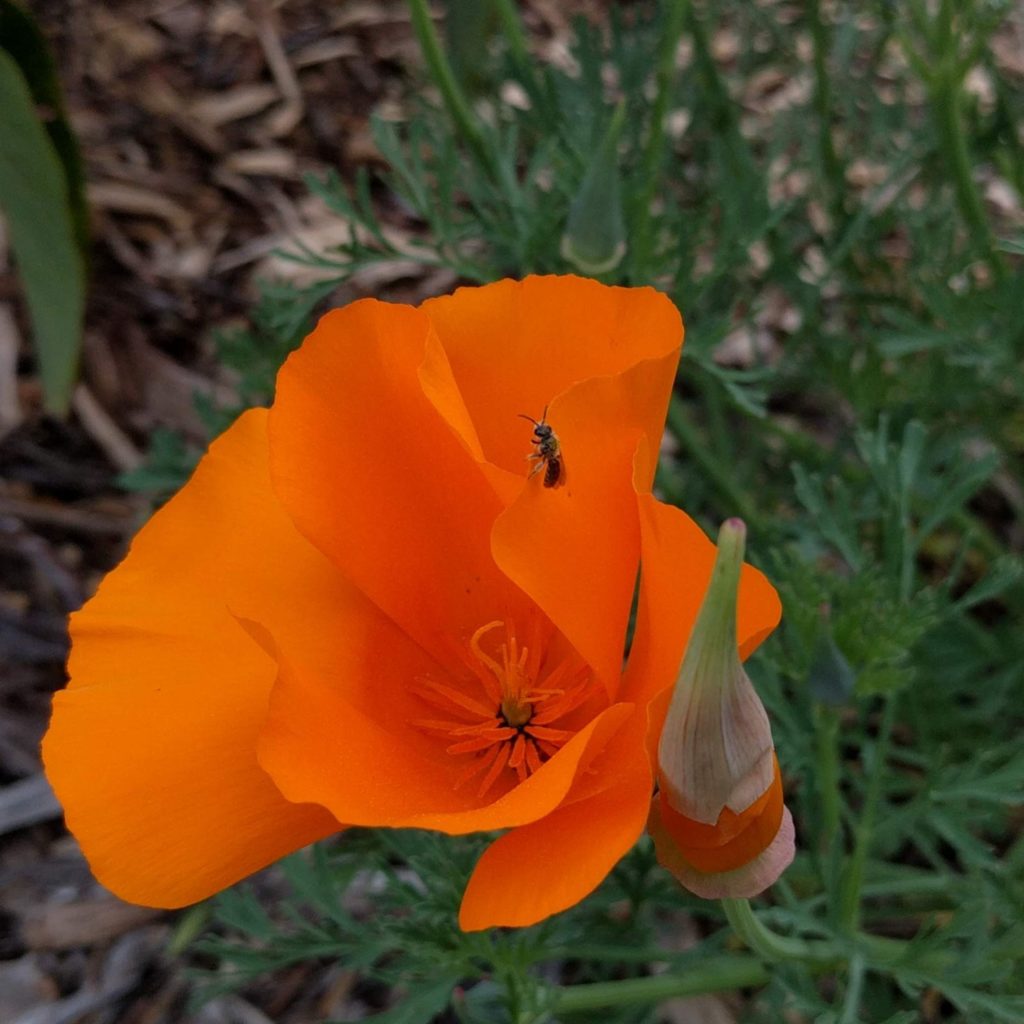
Isn’t it fun that bees come in all shapes and sizes? Above you’ve got a tiny bee on a medium sized flower; then below you have a big bee on a tiny flower.

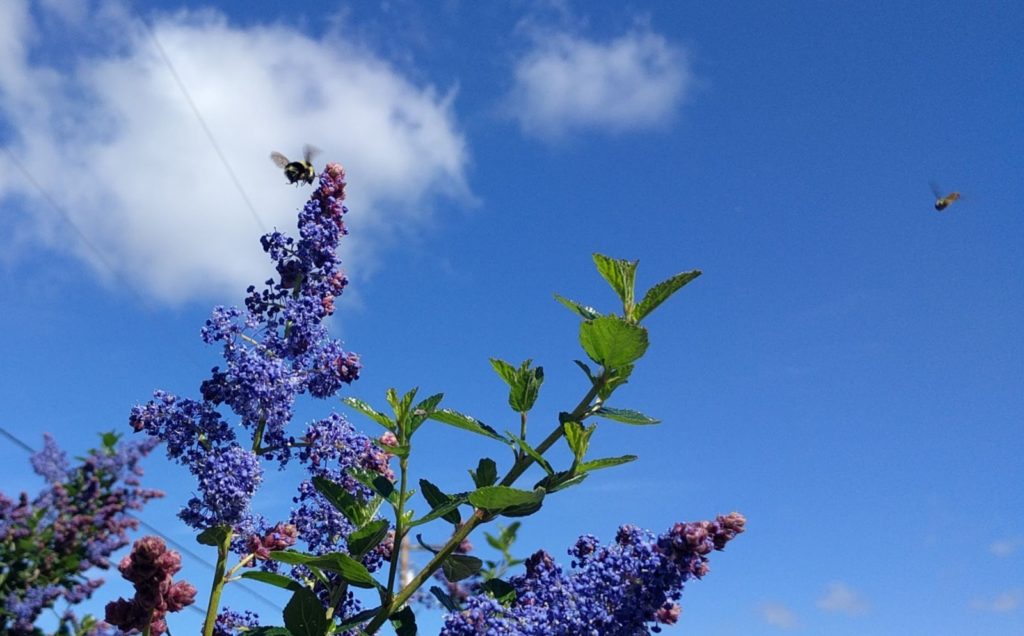
What’s the difference between a bee and fly? One difference is that bees have two sets of wings, so four wings total, whereas flies only have two wings total.

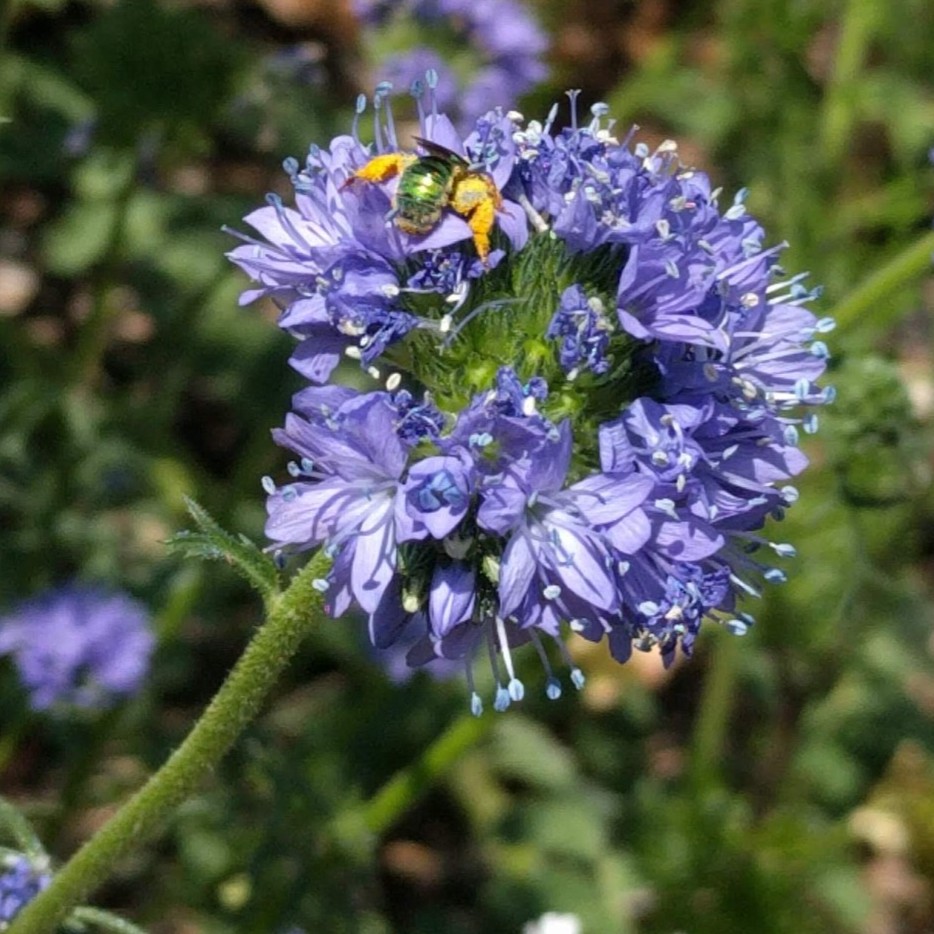
The U.G.S. Bee is common and still I get excited to see one because its colors look unreal.
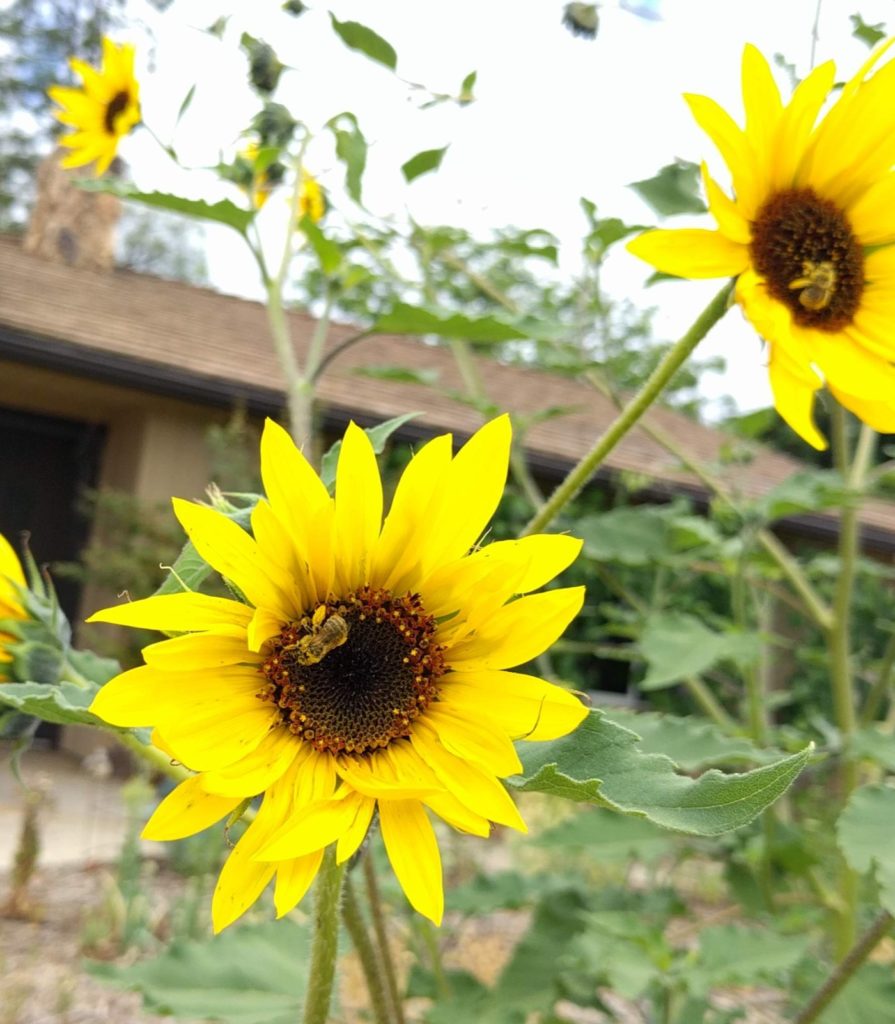
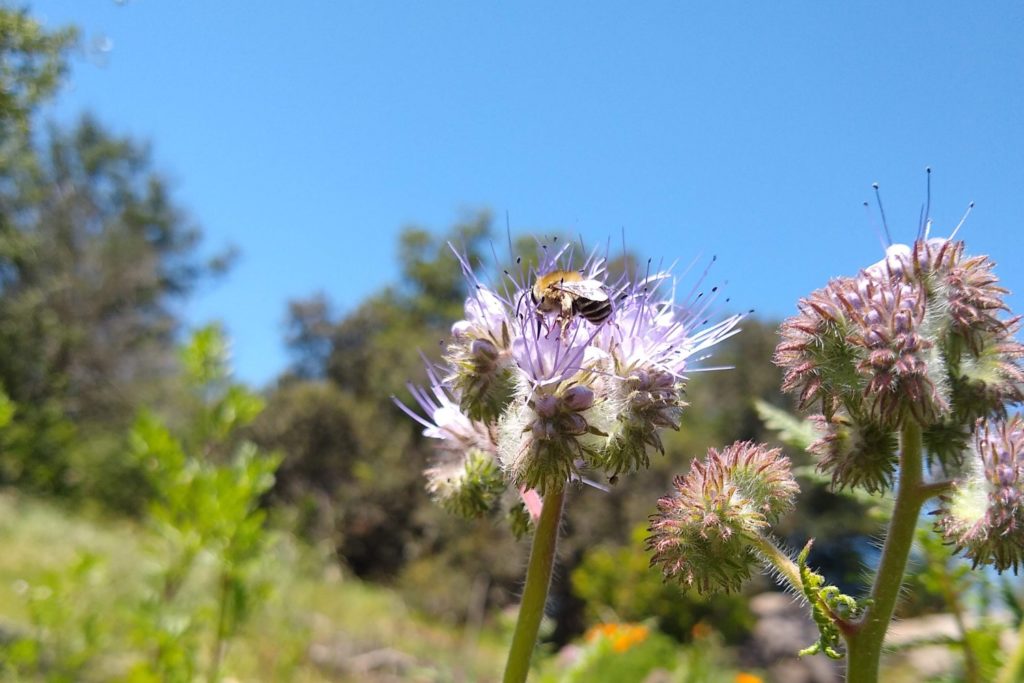
I took this photo a couple of days ago. I often see these bees on phacelia. They look similar to honey bees except are fatter and furrier, and the bands on their abdomens are whiter. They also have large eyes.
Want to see some in your yard? Plant their food and they will come.
And when they do come, they’ll pollinate your vegetables and fruit trees, making more food for you. What a friendly thing to do.
My other bee posts:
Oh, the mistakes I’ve made: thinking flowers were for girls
California Bees and Blooms: a book review
Flowers for bees all year in Southern California
All of my Yard Posts are HERE

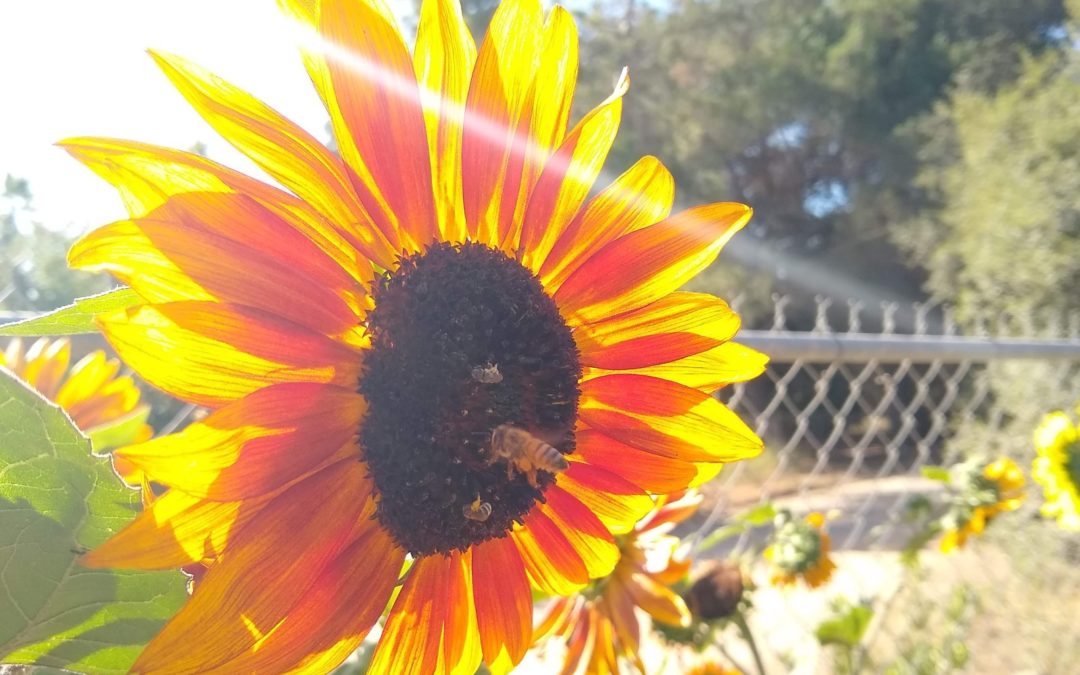


My daughter planted a vegetable garden and has had to put bird netting over it to stop critters digging up her plants. Her concern is: can the bees/will the bees be able to get to the plants’ flowers and pollinate?
Hi Pamela,
I suppose it depends on the size of the holes in the netting. Most bees are as small or smaller than honey bees, and they can probably get into most bird netting.
But it sounds like this critter damage might be happening at night. Maybe it is raccoons or skunks? So she could remove the netting for part of the day to let the bees in freely, if that’s not too much of a hassle.
Thank you; she has been doing that and one day forgot to put it back…. guess what!!! Yup, next day areas dug up. I’m thinking to suggest that she just open up the top a little, and risk the birds!
I love this report on bees. We have two bee hives each with a two story boxes. Our bees are so interesting to watch and amazing how they work. Little legs filled with yellow polen.
Today I weeded a raised bed right next to our hives and they were too busy to pay any attention to me.
Thanks, Susan. I love that about honey bees. We know they can sting, but they don’t want to, and when they are working flowers it’s like they don’t even see us they’re so focused on drinking nectar or gathering pollen.
Can I ask how high your boxes are set off the ground, and if you feel you have to pay much attention to not being in their flight path while weeding next to their hives?
Bee envy!
We’ve got a feral hive in the fence that the neighbor and I just leave there. A few years ago we raided it and the honey was great. Since then we’ve left it alone and I think we get a ton of benefit in the form of pollination from it. Great pictures. I had no idea there were so many bee types.
I just found you/your website/IG. Yay. Loving the posts and photos. I’m in the heart of LA. We kept bees for 4 years in our backyard. They are the coolest creatures going. And their polyfloral honey remains in my taste memory (exceptional). Unfortunately, keeping bees in a small yard is tough work mainly due to non-traditional threats: Africanized bees and persistent varroa destructors. It became less about beekeeping and more about mite management. But I miss them! And the smell of honey-baked bread coming from the hives in the summer heat – oh!
Today I’m planting a pony pack of sweet corn — first time trying corn. Our soil is heavy clay. I’m digging a new area in our front yard but not going too deep due to pipes. Wish me luck. Do you ever plant corn in mounds? Take care and thanks for sharing your oasis stories.
Hi Tracy,
Thanks for writing. That honey-baked bread sounds amazing. I have planted corn in mounds. It works well. The last time I did it was in a Three Sisters planting where I planted mounds of about four corn plants interspersed with beans and pumpkins trailing below. As I recall, the pollination of the corn was adequate. Adequate pollination is always the challenge with small corn plantings. See my post about growing corn, if you haven’t already: https://gregalder.com/yardposts/growing-corn-in-southern-california/
Greg, you really do such a service to us San Diegans! Yard Posts are a great balance between general know-how and fine-tuned, localized experience. I appreciate your discipline and generosity…. growing our knowledge and creating a wider gardening community one Post at a time!
Hi Greg, Love your information on gardens, my beloved avocado tree and now bees. I have learned a lot about Hass avocadoes from you. I have a 8 year old tree that I have pampered and treasure. I cried when we had the heat wave and I saw all the damage it did a few years back. I thought I lost it for sure. But luck was on my side, and I brought back the crumbly leaved tree I saw that July, to what it is now. Full of flowers and Bees going crazy in it. Much of my success has been due to reading all your posts, watering according to your guide and planting lots of bee plants in my garden so they can pollinate my tree. I even put up a Mason Bee house, but not too much luck there yet. I will be patient. I have a bee friendly backyard, there is lavender all around my yard, Borage I just started planting last year and love as much as the bees do, beautiful flower and so easy to grow from seed. The Bees are all over it. A surprise I found out this year was how much they love the flowers from onions. I have never let my onions go to seed, but this year I did on purpose, as I had read somewhere that Bees love it and they do. I will always plant some onions just for my bees. Two or three of them will go onto one cotton looking puff and just sit there. Never have seen anything like it. Thank you again for all your information, look forward to it every week.
Hi Di,
Thank you for writing that. So much fun to read. Sounds like I’m not the only one wandering through the yard at every chance to see what the bees are up to.
Anyone know why this little flower seems to be killing the bees in my yard
Which flower?
Greg,
I miss your calendars. Are you not going to make them anymore?
Peggy
Hi Peggy,
Thank you. I am trying to get out a new calendar that is evergreen so it can be used for any year and every year. I hoped to have it ready by spring but that has obviously not happened. It’s still in the pipeline.